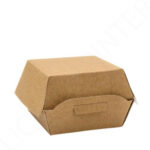The custom cardboard boxes are a hot market because of the versatility, affordability, and brand opportunities in various industries such as retail, e-commerce, food, and electronics. The dynamics of the packaging environment are changing with enterprises willing to find new approaches to creating cardboard-based products that will not only help in the preservation of the quality of the contents but also convey the values of identity and sustainability so that the enterprise is represented effectively.
The development of a new product in the cardboard packaging industry entails a set of preconceived processes, starting with market research to design, and production. Similar to the release of a new product or the extension of packaging assortments, this guide will take you through the whole process of designing an efficient and new design custom cardboard solution.
Research Demand in the Market
Product development is based on knowing the needs of the market. So, to start with, find out what the current trends or demands of cardboard package boxes are in your industry. Competitor, customer, and package innovation analysis should be done to discover unmet needs or areas of opportunity. Sought out advantages can be eco-friendliness, structural design, or the convenience of users. Everywhere in Canada, most companies are in search of custom cardboard boxes that are compliant with the local laws and the sustainability norms.
Identify Product Purpose
Each of the boxes ought to be composed with a specific purpose. Decide on what you are going to pack in your new custom cardboard packaging product: fragile, food, apparel, or promotional products. What it contains will determine the size, strength of its material, the coating, and the type of closure. Then there is the customer journey: Will they buy it to put out on the shop floor, send it out as a deliverable, or give it as a gift? When it comes to matching the packaging role with consumer experience, your boxes are going to be useful and valuable.
"Give thanks to the Lord for He is good: His love endures forever."
Select Box Style
Boxes used in the cardboard industry include tuck-end, auto-lock bottom, sleeve, and mailer, among others. The decision is based on the structural needs and the design objectives. As an example, printed cardboard boxes with window holes in them are very good at product visibility, and mailer boxes are good at shipping e-commerce goods. Decide on the style that best suits your brand and safeguarding requirements. An effective design structure preconditions effective prototyping and manufacturing.
Choose Good Quality Materials
The use of materials influences durability, weight, and recyclability, as well as cost. Standard corrugated or paperboard is generally applied, or you may want to use coated or textured paper in case of high-end packaging. Recycled cardboard is gradually becoming the way to go in terms of sustainability. When you want to buy wholesale cardboard boxes, one of the considerations might be to buy from FSC-certified sources. The flute and finish (matte or gloss) need to be well selected, depending on the intended use.
Bring in Branding Aspects
Good visual branding makes your packaging stand above the rest. Collaborate with the designers to work out artwork, newspaper logos, a nd color themes that depict your brand style. Cardboard boxes can be printed in special designs, QR codes, and even with names. Use environmentally friendly inks and print as much as possible. Think about the appearance of the box on shelves or in unboxing videos. Proper marketing packaging not only covers your product but also covers it up to the market.
Develop Prototypes
It is always important to make as well as test the prototypes before engaging in full project production. Such prototype cardboard packaging boxes assist you in ensuring the validity of your pattern, the strength of your material, the correctness of the fold, and the visual presentation. Prototyping will make the boxes practical, economical, and appropriate. It also provides you with the opportunity to take the input of the stakeholders or perform some mini-tests. This will allow the avoidance of costly mistakes in large-scale manufacture.
Durability and Usability of Tests
Testing durability considers the ability of the box to cope with weight, piled, and environmental demands. In case of shipping products, drop tests and moisture resistance tests are significant. Usability is concerned with the convenience with which the customer can open, reseal, or discard the box. In cardboard boxes wholesale, the convenience of storage and assembly is also desired. Rigorous testing ensures that people have confidence in the functioning of your product as well as level up consumer satisfaction.
Mass Production Coordination
Now that your prototype has successfully passed all tests, it is time to switch to production. Select consistent suppliers who are familiar with custom cardboard boxes in Canada or the market you want to hit. Align schedules, minimum order quantities (MOQs), and transport logistics. With bulk runs, efficiency and control of quality are important. Small-batch customizable boxes of cardboard are preferred in the case of startups or limited editions. Even when choosing a supplier to order, it is always advisable to review costs, lead times, and certifications.
Conclusion
It takes careful preparation of the combination of design, material science, branding, and market understanding to come up with new custom boxes with logo and custom cardboard boxes. Since spotting the need to have packaging to testing and mass production, all these stages contribute to the success of the final product. Be it a green solution, a bold brand image, or construction innovation, it is possible to create a new cardboard box product that distinguishes your business in competitive markets. Your custom boxes with logo have the potential to protect, market, and amplify your brand through all of your touchpoints when planned effectively and with the right combination of elements.









